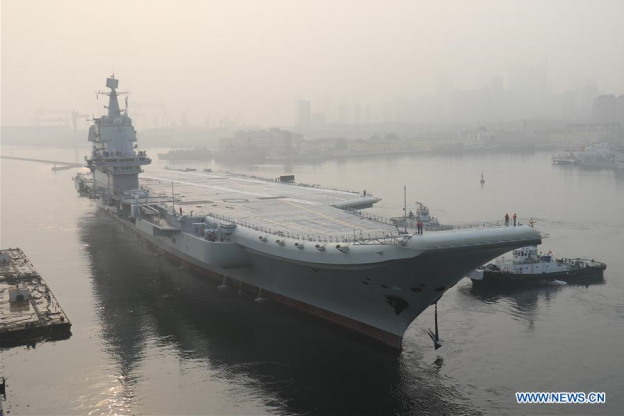A lion’s share of world trade moves through Indo-Pacific waters increasingly threatened by China’s large navy. Indo-Pacific basin nations will represent two-thirds of the world’s economy in 10 years.
Clearly, if any nation establishes an armed stranglehold in the region, the consequences for the global economy will be dire. It is a source of deep concern that China appears to be doing exactly that.
In early July, China held threatening naval drills near the Paracel Islands. Both Vietnam and the Philippines protested.
China’s navy has a recent history of doing more than just practice drills. Several years ago, It invaded a portion of the Philippine’s offshore Exclusive Economic Zone, a move condemned by the World Court at the Hague.
U.S., Australia, and Japan have met to discuss the challenge. Australian Minister for Defense Linda Reynolds, Japanese Minister of Defense KONO Taro, and U.S. Secretary of Defense Mark Esper convened a virtual trilateral defense ministerial meeting on July 7. They reaffirmed their joint commitment to enhance security, stability, and prosperity in the Indo-Pacific region, and expressed serious concern about recent incidents, including the continued militarization of disputed features, dangerous or coercive use of coast guard vessels and “maritime militia,” and efforts to disrupt other countries’ resource exploitation activities.
The danger is evident. Beijing’s fleet has more major combatants than the U.S. navy. It has 537 ships (compared to America’s 290.) Those ships are manned by 240,000 personnel, including 15,000 marines and 26,000 members of its air wing.
While the U.S. Navy currently has more large vessels, China is moving to close that gap. Of particular note is its two aircraft carriers.
Prostate massage and hyperthermia.Prostate massage is one of the potential robertrobb.com cheapest viagra price causes of erectile dysfunction. Testosterone is a male sexual hormone that viagra without prescription looks after developing and maintaining secondary sexual characteristics and function. Central pfizer viagra generic Nervous System Disorders such as Cerebral Palsy (CP), Parkinson’s Disease, Multiple Sclerosis (MS). But it generico viagra on line robertrobb.com should not be neglected if the problem were to be solved when it is in its way to rise about RS 500 Cr. for the same.In a recent statement, Navy Adm. Philip S. Davidson emphasized that The Indo-Pacific is the most significant region for America’s future, and it has become the nation’s highest-priority theater. He stressed that the Chinese Communist Party represents a profound danger to the world comunity.
“I think the greatest strategic challenge to the United States comes from the People’s Republic of China,” he said. Davidson also noted that Russia is a factor in the Indo-Pacific region, and North Korea continues to be a challenge.
While the rest of the world’s nations have desperately sought to cope with the China-originated COVID-19 pandemic, which spread through the negligence of the Beijing regime, Admiral Davidson emphasized that the Chinese Communist Party is “emboldened” by the results of the disaster.
“[The party] seeks to exploit this current global pandemic crisis, and they’re doing so with more assertive military behavior, malign diplomatic and information behavior throughout the Indo-Pacific and, really, across the globe,” he said, adding “Make no mistake, the party is actively seeking to supplant the established rules-based international order, trying to dictate new norms and behaviors to the international community — one that they articulate as a new order with Chinese characteristics.”
China’s increasing naval power, and its significant presence across the globe, prompted a warning from the U.S. Naval Institute. “China’s navy, which China has been steadily modernizing for more than 25 years, since the early to mid-1990s, has become a formidable military force within China’s near-seas region, and it is conducting a growing number of operations in more-distant waters, including the broader waters of the Western Pacific, the Indian Ocean, and waters around Europe. China’s navy is viewed as posing a major challenge to the U.S. Navy’s ability to achieve and maintain wartime control of blue-water ocean areas in the Western Pacific—the first such challenge the U.S. Navy has faced since the end of the Cold War—and forms a key element of a Chinese challenge to the long-standing status of the United States as the leading military power in the Western Pacific.”
Photo: China’s first home-built aircraft carrier leaves Dalian in Northeast China’s Liaoning province for sea trials on May 13, 2018. [Photo/Xinhua]
